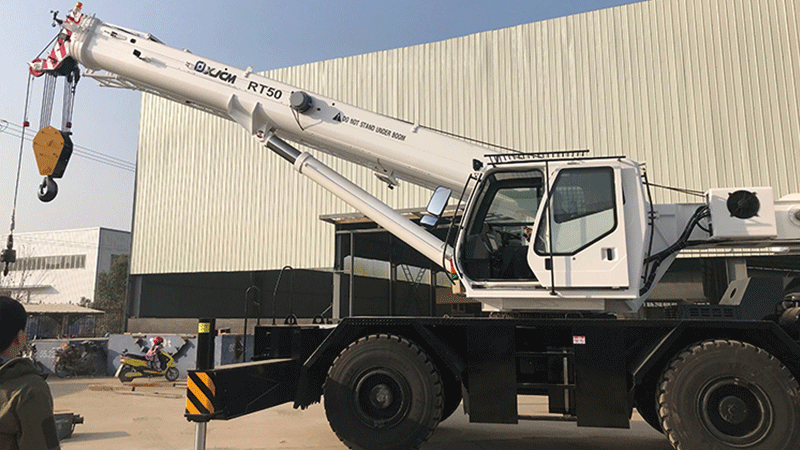When evaluating a rough terrain crane, one of the most important technical factors is the types of steering system it uses. A crane’s steering system determines how easily it can maneuver in construction sites, oil fields, warehouses, and other challenging environments.
Modern rough terrain cranes are designed with multiple steering modes to balance stability, safety, and flexibility on uneven ground.
4 Types of Steering System in Rough Terrain Cranes
Front-Wheel Steering
- Works like standard vehicles.
- Provides stability at higher speeds when traveling on roads.
- Best for longer distance movement between job sites.
Rear-Wheel Steering
- The rear axle controls direction.
- Enhances maneuverability in tight or narrow work areas.
- Useful for precise positioning during lifting operations.
Four-Wheel Steering
- Both axles steer at the same time.
- Significantly reduces the turning radius.
- Critical for construction sites with restricted space.
Crab Steering (Diagonal Movement)
- All four wheels turn in the same direction.
- Allows the crane to move sideways without adjusting the boom angle.
- Perfect for working near walls, pipelines, or obstacles.

Why These Steering Systems Are Critical
The types of steering system in rough terrain cranes provide:
- Maneuverability – Small turning radius for confined job sites.
- Versatility – Multiple steering modes for both on-road and off-road conditions.
- Safety – Reliable hydraulic control ensures smooth operation under load.
- Efficiency – Reduces the need for frequent repositioning.
Technical Highlights of Modern Rough Terrain Cranes
- Multiple Steering Modes: Front-wheel, rear-wheel, four-wheel, and crab steering
- All-Wheel Drive: Enhanced off-road performance
- Hydraulic Control System: Ensures safe and precise steering
- High Maneuverability: Designed for narrow spaces and uneven terrain
- Flexible Outrigger Options: Fully extended, half extended, or none, depending on site conditions
Typical Applications
- Construction projects in urban or confined environments
- Outdoor heavy-duty lifting operations
- Logistics bases, warehouses, and freight yards
- Oil, gas, and mining sites requiring all-terrain mobility
Conclusion
The types of steering system in rough terrain cranes—front-wheel, rear-wheel, four-wheel, and crab steering—are designed to deliver maneuverability, safety, and efficiency in challenging environments. By integrating these steering modes, rough terrain cranes can handle diverse lifting operations while ensuring reliable performance both on and off the road.



